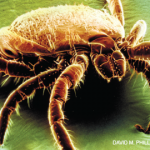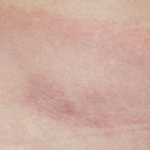“No. I’m sorry, but I’m not willing to do that. I wish you the best. I really do.” I stood up and extended my hand. The visit was over. “If you change your mind …”
I don’t remember what she said as she gathered her belongings and stormed out. Her limp was real. Her disease was real, only it was the wrong disease.
I watched her turn the corner toward the check-out counter and then turned my attention to the chart on the wall of my next patient. I cleared my mind as best I could and reviewed the history.
Okay. Let’s see if I can help.
Charles Radis, DO, is clinical professor of medicine at the University of New England, College of Osteopathic Medicine and employed part time at Maine Coast Memorial Hospital in Ellsworth, Maine.
References
- Fallon BA, Keilp JG, Corbera KM, et al. A randomized, placebo-controlled trial of repeated IV antibiotic therapy for Lyme encephalopathy. Neurology. 2008 Mar 25;70(13):992–1003.
- Krupp LB, Hyman LG, Grimson R, et al. Study and treatment of post Lyme disease (STOP-LD). A randomized double-masked clinical trial. Neurology. 2003 Jun 24;60(12):1923–1930.
- Klempner MS, Hu LT, Evans J, et al. Two controlled trials of antibiotic treatment in patients with persistent symptoms and a history of Lyme disease. N Engl J Med. 2001 Jul 12;345(2):85–92.
- Kaplan RF, Trevino RP, Johnson GM, et al. Cognitive function in post-treatment Lyme disease. Do additional antibiotics help? Neurology. 2003 Jun 24;60(12):1916–1922.
- Berende A, ter Hofstede HJ, Vos FJ, et al. Randomized trial of longer-term therapy for symptoms attributed to Lyme disease. N Engl J Med. 2016 Mar 31;374(13):1209–1220.
Fast Facts
Lyme Disease
- The infection is caused by the bacteria Borrelia burgdorferi and spread primarily by the Ixodes dammini tick.
- The characteristic rash, erythema chronicum migrans, occurs in about 50% of patients between three and 14 days after the initial tick bite and represents the leading edge of the infection.
- The bacteria, in the same spirochete family as syphilis, can be successfully treated with antibiotics.
Psoriatic Arthritis
- Psoriatic arthritis is a chronic arthritis. In some people, it is mild, with just occasional flare-ups. In other people, it is continuous and can cause joint damage if it is not treated. Early diagnosis is important to avoid damage to joints.
- Psoriatic arthritis can occur in people without skin psoriasis, particularly in those who have relatives with psoriasis.
- Psoriatic arthritis typically affects the large joints, especially those of the lower extremities, distal joints of the fingers and toes, and also can affect the back and sacroiliac joints of the pelvis.
- For most people, appropriate treatments will relieve pain, protect the joints and maintain mobility. Physical activity helps maintain joint movement.
- Psoriatic arthritis is sometimes misdiagnosed as gout, rheumatoid arthritis or osteoarthritis.
Learn more on the ACR’s website at http://www.rheumatology.org/I-Am-A/Patient-Caregiver/Diseases-Conditions/Psoriatic-Arthritis.


